Our final adventure in Myanmar led us to Mandalay, a city loaded with history and natural catastrophes. Indeed the city suffered from a number of earthquakes, the last one occurring in 2017. It’s also there that King Thibaw was defeated by the British in 1887.
Britain then took control of the north of Burma and extended what was known as the British Raj. There’s a wonderful book about the history of Burma, from that period up to the coup in 1962, written by Amitav Ghosh, entitled The Glass Palace. Of course, it’s a bit romanticised but you do learn a lot about Burma and the far east. I strongly recommend it if you enjoy reading.
Back as a Ploughman
But enough of meandering and let’s get back to our story. We were quite curious when leaving Bagan as we were to take the only Burmese motorway, What a treat! However, before reaching the fast road we had another spell of Burmese potholes. Fortunately we met a nice farmer ploughing his field to plant peanuts. The plough was made of just two separate wooden boards with some sort of metallic “claws” nailed underneath. My wife and I did try to operate it at the farmer invitation but I don’t think either of us will ever reincarnated into a good Burmese ploughman.

After a couple of hours’ driving, we finally reached the motorway. To describe it you should imagine giant cement slabs, sandy hard shoulders and sand tracks that lead in and out of the highway with a scorched landscape on either side. But that was in the dry season. I imagine that it must be really slippery during the monsoon. However, we reached Mandalay in no time according to Burmese standards. We stayed not far from the harbour, but more on that later.
Kindle Max
We first paid a visit to the longest book in the world — the Kuthodaw inscriptions shrine made of small white stupas with engraved stones — before going up Mandalay Hill for sunset. It’s a famous place with monks and Burmese students who go up there just to speak English with the tourists. It’s really lively and unless you’re mute, you’re likely to start a conversation.

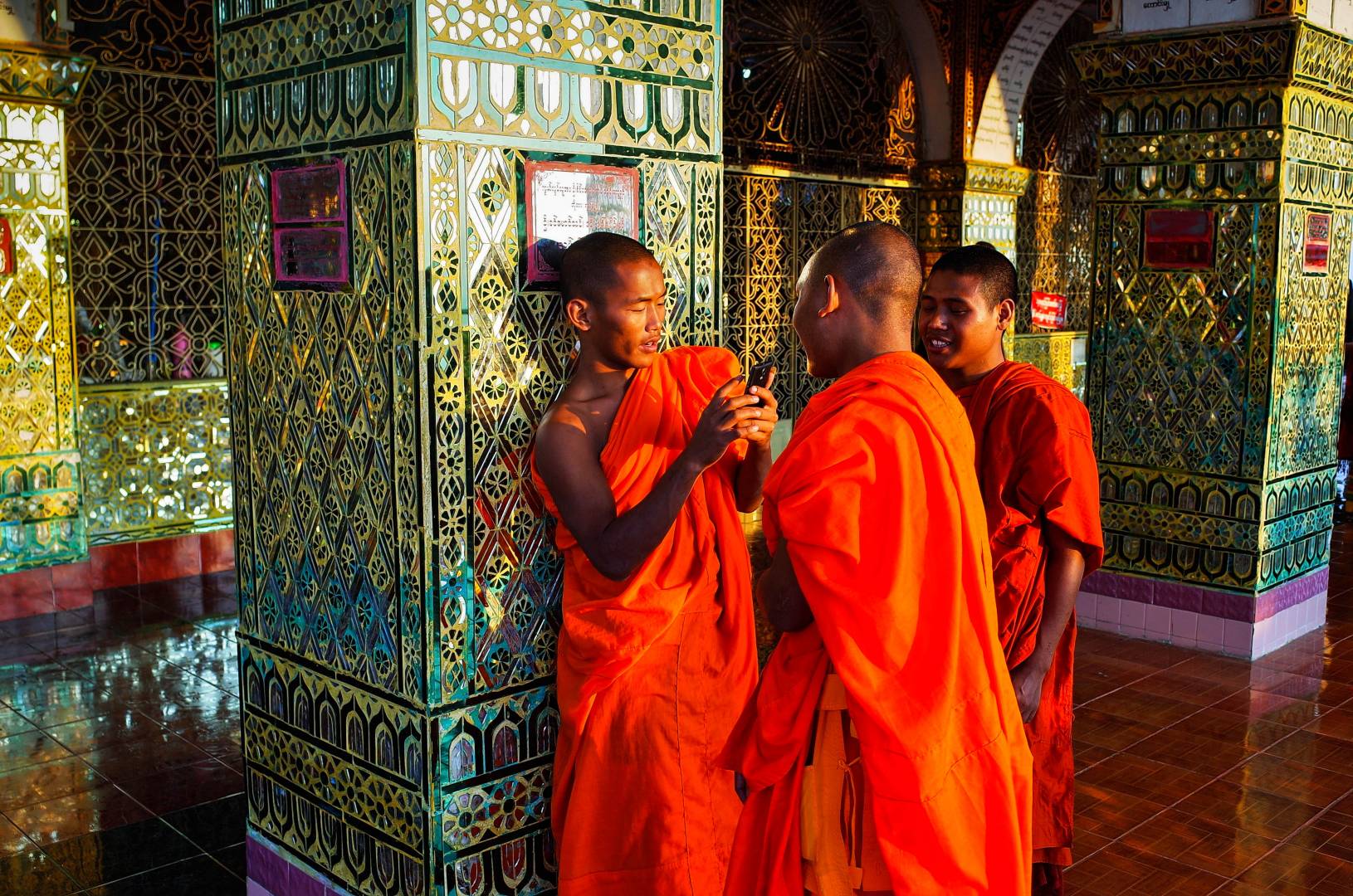
We also went to the Mahamuni pagoda, a famous pilgrimage centre because of the Mahamuni Buddha in the pagoda. People have put so much gold leaf on the statue that the Buddha’s body looks more like a gilded version of Hulk than a holy image. Incidentally, this was an opportunity to meet an interesting party of pilgrims. We also visited a temple in Sagaing where we met a very friendly old woman. Her family told us she was 93 and was still in good health as she was a good Buddhist. I could not resist taking her portrait.

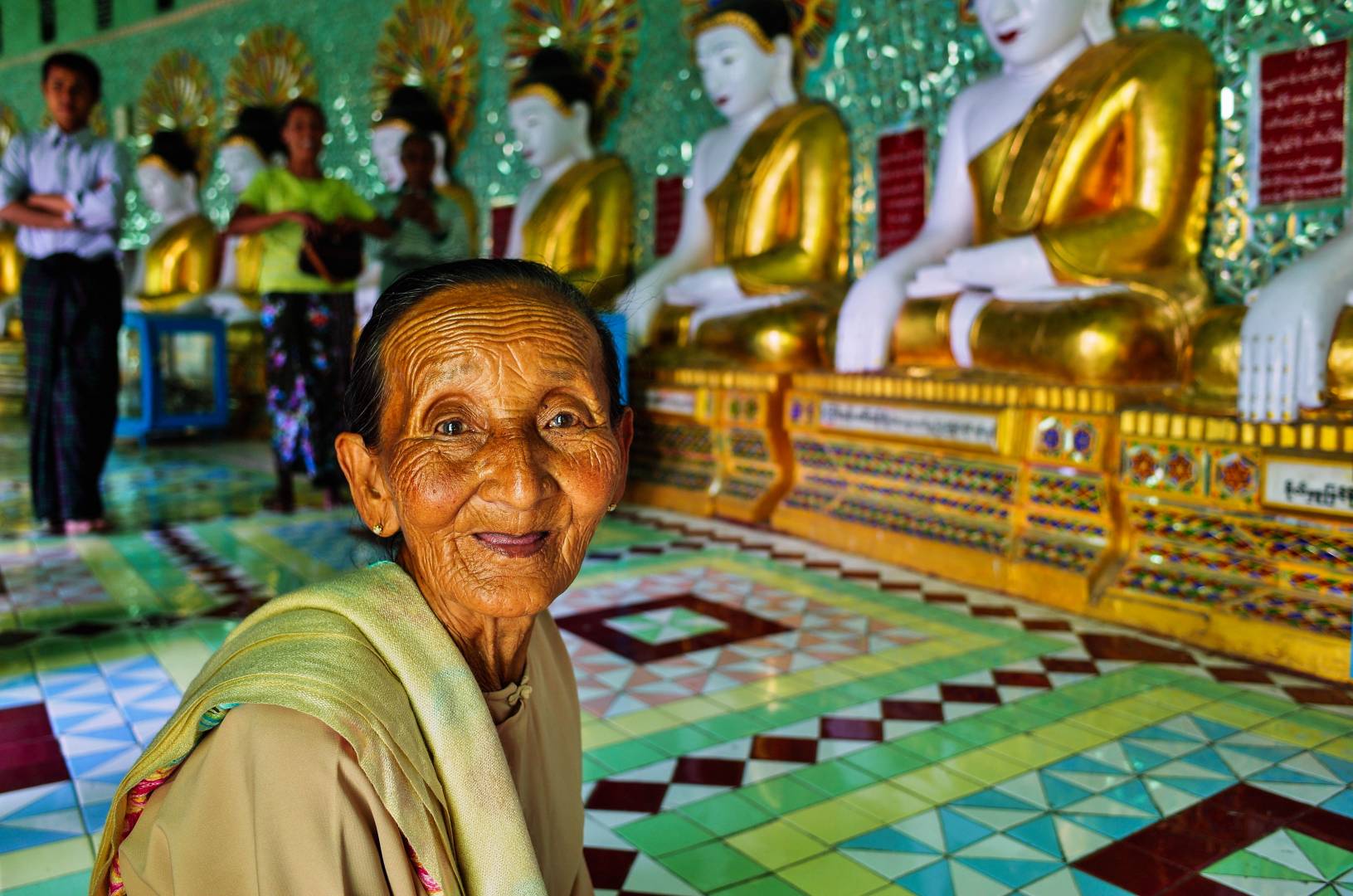
Pure Sand
The harbour on the banks of the Ayerwaddy was absolutely amazing. We spent part of the morning watching the ballet of young men and women loading sand, going uphill, unloading and piling it up some ten metres higher, not far from the road. The Ayerwaddy sand is one of the purest you can find and is good for building.
This is how it works, a carrier loads sand from small boats into a basket. It then goes atop the head and the carrier starts going uphill. When they arrive halfway up they transfer the basket to another carrier who goes up the hill and unloads it onto the existing pile of sand. The banks are also homes to families of fishermen. At night the banks of the river are bustling with life with petrol vendors, small outdoor restaurants lining along the pavement that border the harbour and, of course, an unending ballet of small lorries, motorbikes and cars.

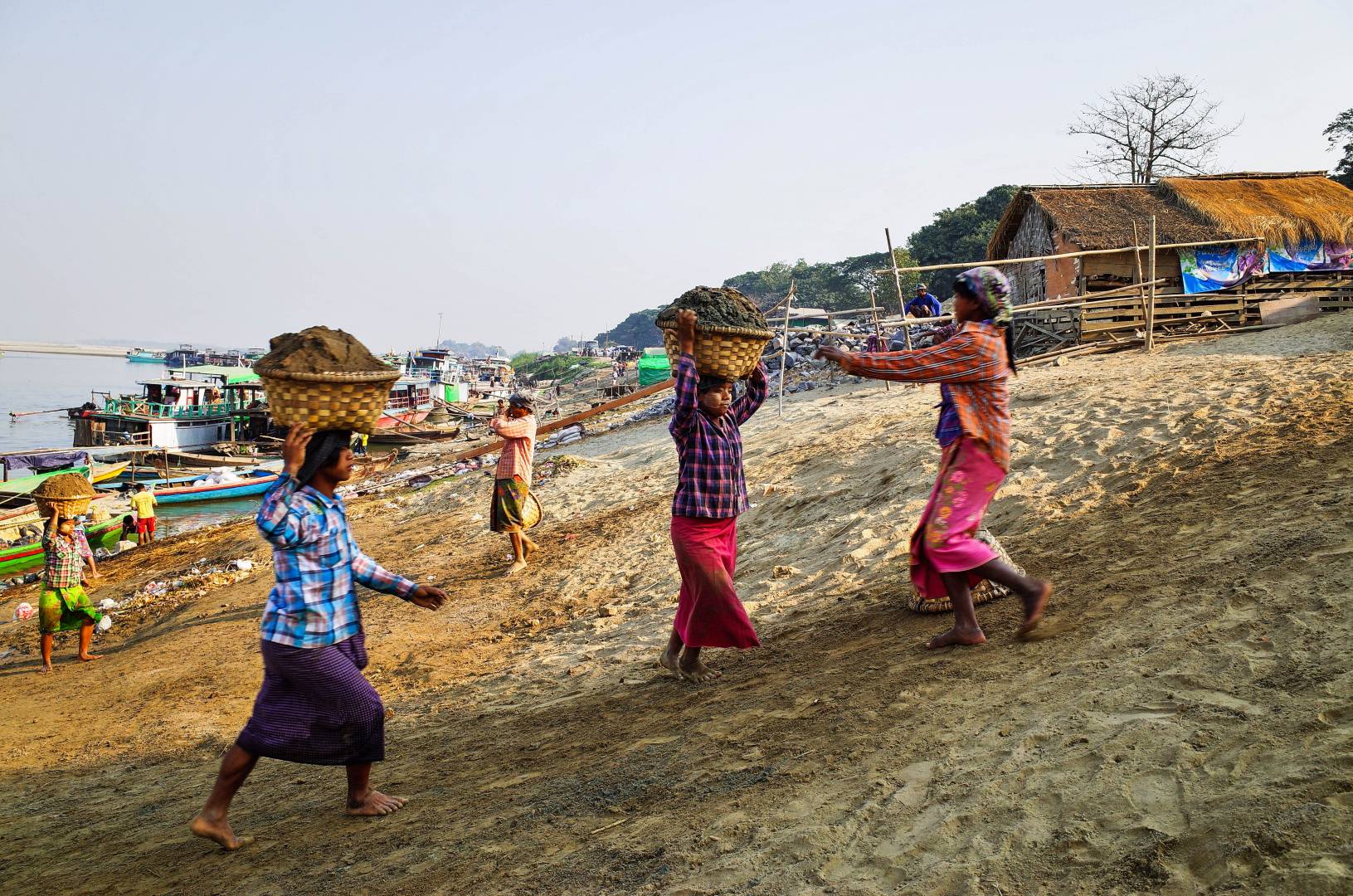

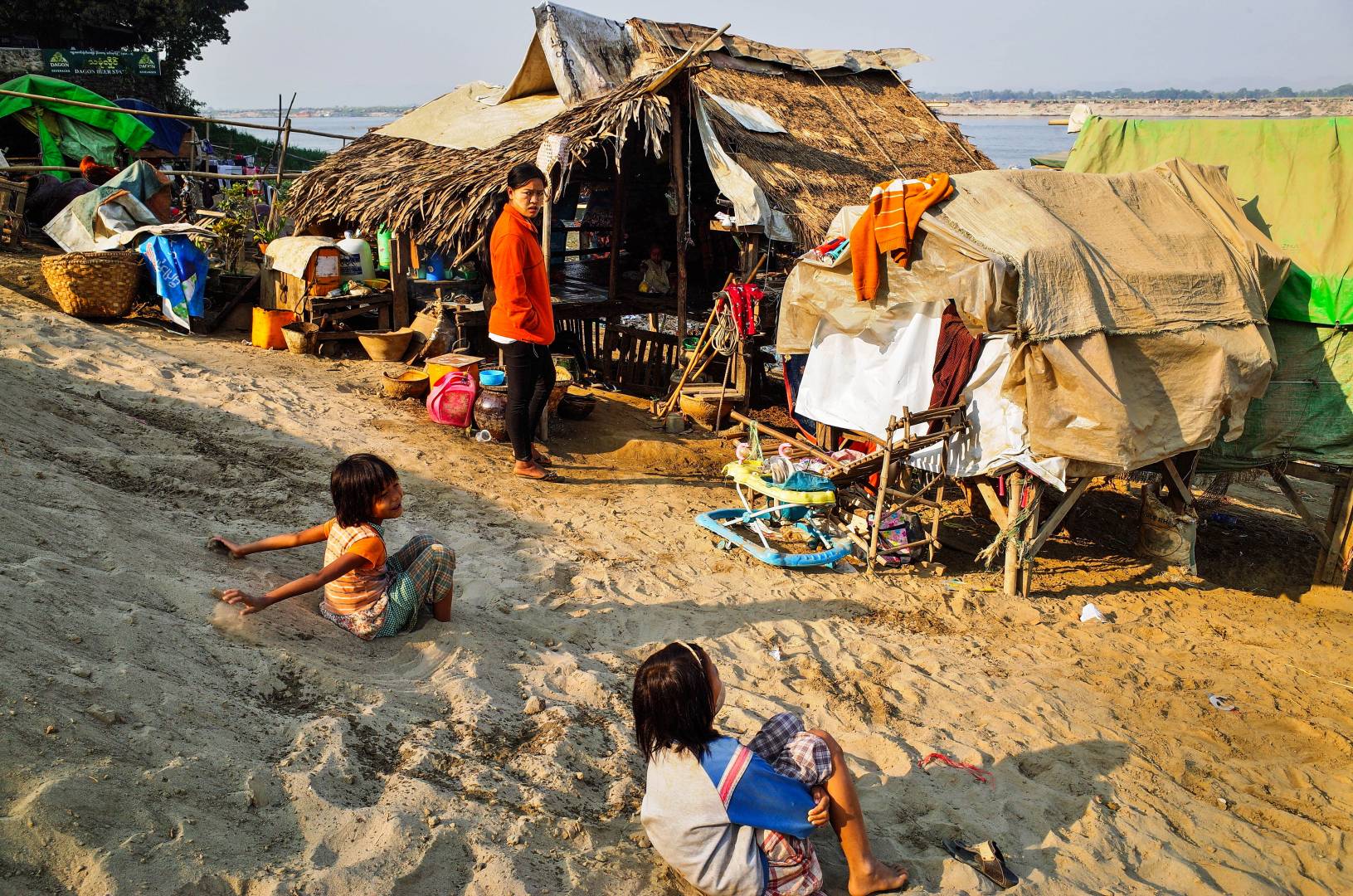
Opposite Mandalay harbour lies Sagaing harbour which specialises in teak wood. I was truly amazed by the young carriers who look so small compared to the pieces of log they carry.

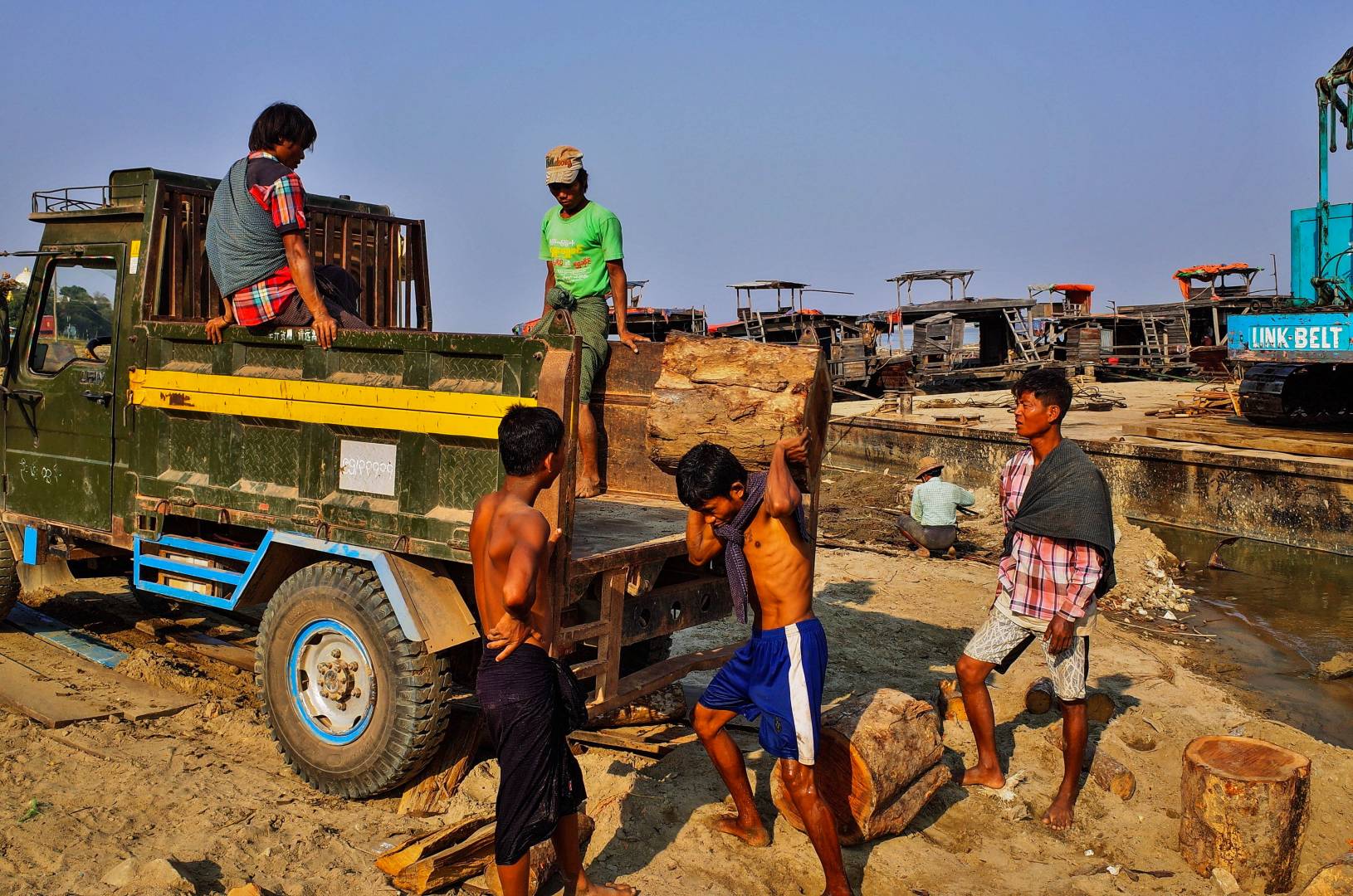
Sagaing market is full of charm and colours. People go about the stalls slowly. The rhythm is not as hectic as the market in Yangon. People take their time to buy fruit, vegetables or thanaka that make Burmese women skin so special. Some even find time for a nap.
We ended the day at U Beinn bridge, the longest teak bridge in the world. The place is really crowded and you have to shoulder your way to a boat that will take you to admire sunset from a wooden boat.
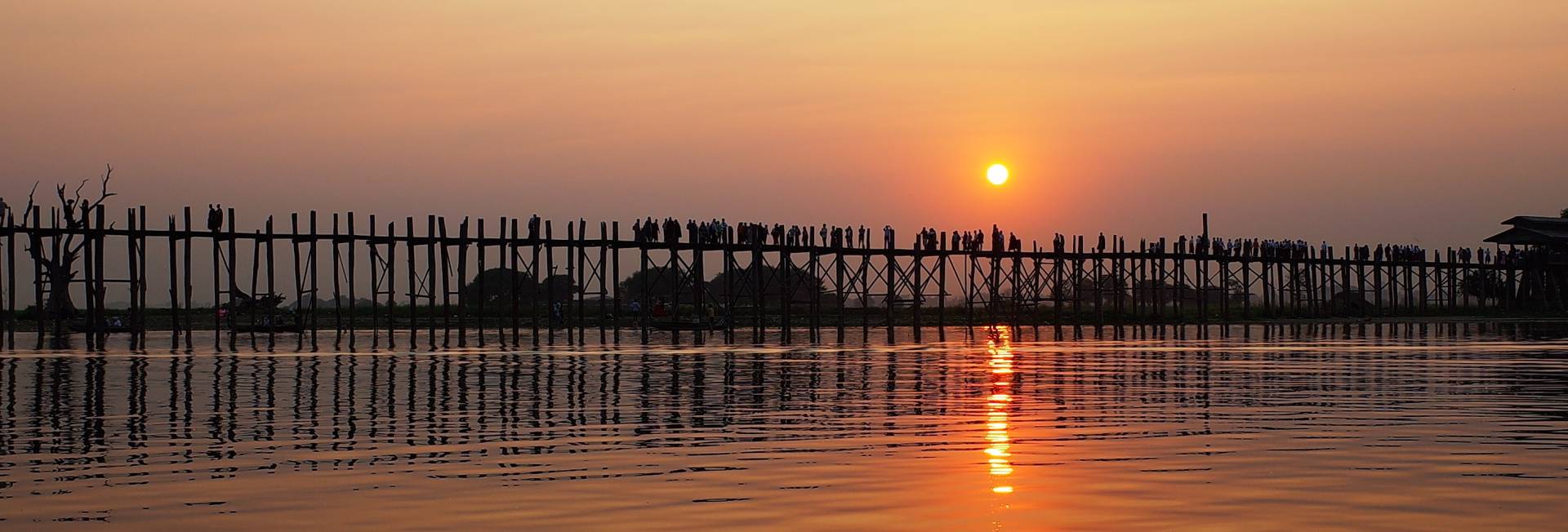
Previously in this series:







Great article.
The U Beinn Bridge picture is excellent.
Thanks Tuco
Again a wonderful series of pictures. The market scenes are fascinating and I agree with Kevin that the composition of the picture of the three women carrying sand is superb. The stand out shot though is the portrait of the 93 year old. What a wonderful picture. I can feel her personality coming out of the frame. Very well done!
I think Richard was reading my mind when he wrote his comment and probably worded it better so I say ditto!
Hi Kevin
I know you’re an x vario user. My camera dealer syas that the camera won’t suit me as he knows I’m a single lens shooter. I’ve seen 2nd hand x vario and I was wondering if I’d make the plunge . Could you enlighten me as you own the camera.
Thanks Jean
I don’t think the zoom is a negative as the lens is very high quality and sharp. Mike’s initial review is worth reading. Given the size of the lens it has to be a little slow but that’s not an issue for me most of the time. All in all the lens is the reason to buy the camera. The body and firmware need to be understood to get the most out the camera. By that I mean the APSC sensor has some limitations compared to a full frame sensor particularly regarding low light performance and dynamic range. The closest full frame camera in terms of size and lens would be a Sony. But then you are in the world of Sony rather than Leica and it is a different animal.
I recommend the X Vario as a camera and think you would enjoy using it and the results given the type of photography you show in your articles. That’s the long answer, my response initially was ‘buy it’.
Thanks Kevin.
Jean , I also heartily recommend the X Vario. It is a superb camera. By coincidence I believe that Mike will be publishing a story of mine on the X Vario this coming week.
In that story you will see that I endorse Kevin’s advice-if you see a good one buy it.
Whatever you do don’t listen to the X Vario knockers-of which there are many. They have most likely never even seen an X Vario yet alone used one and seen the superb results they can produce.
As for a full frame Sony well best not to get me started on that one but suffice to say you can find an account of my brief unhappy tryst with an a7 on Macfilos.
Thanks John,
I am investigating the x vario second hand market seriously. As for the sony A7 I hated the camera and did not keep it. The colour rendering was on the cold if not artic side. The images were empty and gave you the impression that you could cross the image just like a ghost. The images were impossible to postprocess. The menus far too complicated. I am swapping between a ricoh grd 4 and its tiny ccd sensor and the X2 at the moment and perfectly happy with both. I was wondering if you can get some sort of bokeh wide open at 50mm and 70.
Thanks Richard,
Mandalay harbour is full of opportunity to make good image as long as you’re patient. There’s another portrait of the old lady in the LFI gallery.
As a post-script the woman in the film is a keen photographer and takes out her Leica compact (not sure which model) to record her journey at every opportunity. Although I’m not convinced the photos shown actually came from the camera!
I think the series of photos about the sand carriers is excellent and tells the story very well. I particularly like the one of the three women walking up the hill with baskets on their heads and the way my eye sweeps up in the frame. The last one of the sunset is lovely and a fitting finale to such an interesting series. By chance last night my wife and I watched the film Paris Can Wait about a road trip from Cannes to Paris. Can I put in a request for an article from you on Lyon?
Thanks Kevin
There will be an article about Lyon later that year. I’m visiting my son there next week so there will be more opportunities to make more images.
There is a photo by Atget a landscape of a wooded grove, used to be in the center of Paris and has a stream and river that was part of it was called Bievre, now I guess it’s underground and my question is do you know if it surfaces any place and have you done landscapes in that area? All anyone seems to see is pics of Seine.
The river has been underground since 1891. It’s in the 13ème arrondissement in Paris and is replaced by la rue Edmond Gondinet.I think you can see La Bièvre in the west of Paris where there’s the old Bièvres camera fair.
What a lovely series, can’t wait for your next trip. Think besides that beautiful woman photo I like the Banana pic and end pic guy snoozing. Please keep your stories coming and would love to see more of where ever you go in France.
Thanks John,
the banana pic is a picture I noticed when I was preparing the article. As for France, I do take a lot of images of the city where I live and the surrounding area and of my home town, Lyon. Otherwise I rarely travel in France these days and my wife and I keep telling ourselves we’ll visit some places when we get older or when we’re short of money to buy plane tickets. Next destination is Slovenia in the summer.
A great story and collection of images for sadly the final part of this joyous journey. I have to say the portrait of the 93 year old lady is particularly sharp and impressive with its textures, a great image in my humblest of opinion.
I cannot wait to see your next adventures.
Thanks Dave,
That old lady was indeed a very beautiful person. We spent some time with her and her grandchildren as they were visiting the pagoda. I had two portraits of her taken. These people were so quiet, so peaceful and so open. Myanmar is a particularly friendly place and the people are amazing despite all the many hardships they have to face.